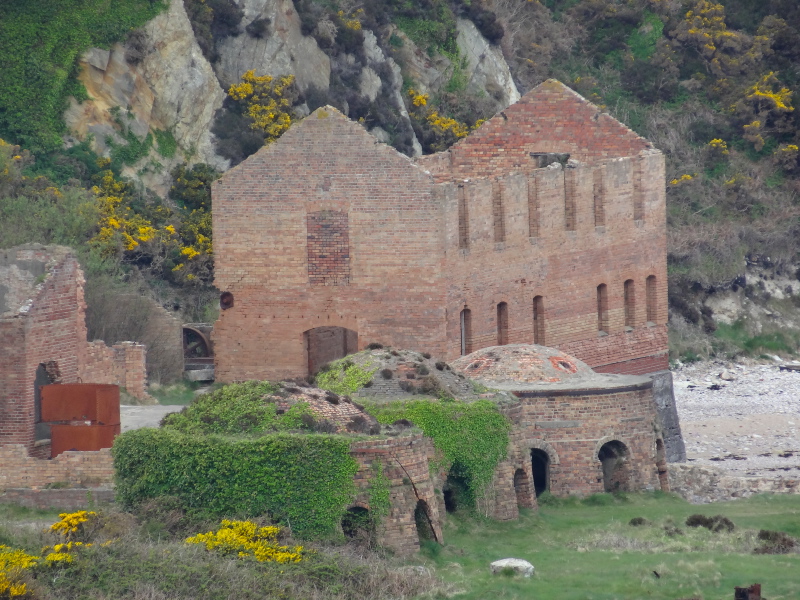The author's one thousand walk around Wales in 2013 created a substantial open-science dataset, which is of potential benefit to many working on the impact of outdoor activities and health. It also gave rise to observational data that highlights some of the barriers to exercise for those who often most need it, and especially some of the socio-economic hurdles.
Keywords: Walking, mobile technology, tourism, social exclusion, bio-sensing, health and well-being
Just over four years ago, on 18th April 2013, I set out on a thousand mile walk around the periphery of Wales. Although there are few people who have followed the entire route as a single walk, it followed way-marked long-distance footpaths. Unlike the long distance paths of the United States such as the Appalachian Trail or Pacific Crest Trail, UK long-distance paths are relatively close to or pass through population centres, and typically include a mixture of long-distance walkers engaged in multi-day or multi-week hikes, and more casual day hikers or afternoon walkers.
In particular the Wales Coast Path (approx. 870 miles) was opened in 2012 targeted at increasing tourism and encouraging outdoor pursuits. Inactivity and obesity are increasing problems so making outdoor recreation easy and attractive is a core public health priority; walking is known to be a major help in both physical and mental health, as well as simply fun. Furthermore tourism is critical to the local economy of many of the areas through which the path passes.
Methodologically the walk combined forms of action research, experimental technology, auto-ethnography and critical observation. I had personal research goals including the effects of poor connectivity and IT issues for rural and marginal areas. In addition, I declared myself a 'living lab' for other researchers: took part in various experiments, was instrumented with bio-sensors, and tuned my observation for certain 'concerns' such as 'off path destinations'. Of particular relevance to this workshop are two kinds of outcome.
First are the more qualitative and anecdotal outcomes based on individual conversations and observations. This includes socio-economic barriers to exercise, especially equipment costs as the fitness area has become more fashionable. It also includes barriers to family and recreational walking such as confidence that paths will be easily walkable (memories of chest-high bramble thorns!). However, the opportunities are significant: conversations with those rehabilitating from drugs, alcohol, and prison emphasised the positive impact of the natural environment.
Second are the more quantitative and systematic data sets including bio-sensor and accelerometer data, GPS traces, 19,000 photographs, audio recordings and more than 150,000 words of blogs. Of particular note, the bio- data includes 60 days and 30 nights of medical grade ECG trace, the largest such dataset in the public domain. All of the data is freely available as an open science resource and it is being used in a number of projects across the world including the "Technology on the Trail" initiative at Virginia Tech.
Bibliography
- A. Dix (2013). Mental Geography, Wonky Maps and a Long Way Ahead. GeoHCI, Workshop on Geography and HCI, CHI 2013. http://alandix.com/academic/papers/GeoHCI2013/
- A. Dix (2013). The Walk: exploring the technical and social margins. Keynote APCHI 2013, India
http://alandix.com/academic/talks/APCHI-2013/ - A. Morgan, A. Dix, M. Phillips, C. House (2014). Blue sky thinking meets green field usability: can mobile internet software engineering bridge the rural divide? Local Economy, 29(6–7):750–761. doi: 10.1177/0269094214548399
- A. Dix, G. Ellis (2015). The Alan Walks Wales dataset: Quantified Self and Open Data. In Open Data As Open Educational Resources, OKF. doi:10.6084/m9.figshare.1590031
- Natural Resources Wales (2012–). The Wales Coast Path. http://walescoastpath.gov.uk/
- UWTSD (2013). An Exhibition to Coincide with the Visit of Professor Alan Dix to the Roderic Bowen Library and Archives, June 2013. http://www.uwtsd.ac.uk/rbla/online-exhibitions/walking-around-wales/
- Virginia Tech (2017). What Comes After CHI: Technology on the Trail, 2-3 March 2017 https://technologyonthetrail.wordpress.com/workshop
|
Guerrilla Art near Penmaenmawr
(Day 29, Conwy to Llanfairfechan)
Remnants of 19th Century industry at Port Wen, Anglesey
(Day 33, Amlwch to Cemaes)
Barry Island, economically depressed but brightly coloured (Day 99, Llantwit Major to Barry)


